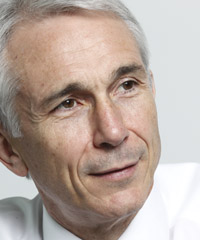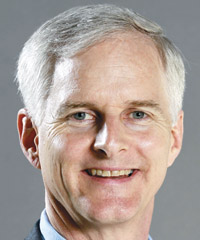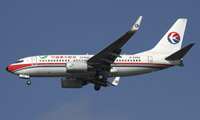Main Story
April 1st 2012
The European Union’s (EU) controversial aviation emissions trading scheme, already under attack by the world’s most powerful nations, is now being challenged by its own major carriers and aerospace industry leaders. Will the EU bow to the pressure?
SIGNS OF COMPROMISE Read More »
 |
| 'We don’t want governments … penalizing the airlines of Europe. We don’t want to step up the trade war' |
| Tony Tyler Director General IATA |
As the European Union becomes increasingly under pressure over its disputed aviation emissions trading scheme (ETS), there are growing signs it is prepared to reach a compromise with its critics.
EU officials, including Climate Commissioner, Connie Hedegaard, have in recent weeks, particularly following threats of reprisals from China, said they would accept a global ETS. EU transport commissioner, Siim Kallas, has also said the EU is prepared to compromise.
And at the Aviation and Environment Summit 2012 organized by the Air Transport Action Group, in Geneva, last month, the EU director for European and international carbon markets, directorate general for climate action, Mary Veronica Tovsak Pleterski, repeated the EU supported a global solution for the aviation ETS.
This came as Europe’s major airlines and aerospace companies joined the chorus of international protest against the EU’s ETS, which was introduced on January 1. They have urged regulators in Brussels to agree to a compromise deal and to wait for a global ETS under the auspices of the International Civil Aviation Organization (ICAO).
In joint letters, European aviation’s major players, Airbus, Air France, British Airways, Virgin Atlantic, Lufthansa, Iberia, airberlin, MTU Aero Engines and Safran, all called on Prime Ministers David Cameron of the UK, Francois Fillon of France, Chancellor Angela Merkel of Germany and Spain’s Mariano Rajoy to take action and stop the escalating trade conflict with China and other countries opposing the ETS.
They are concerned the conflict could seriously damage their businesses. Airbus claims China, which has banned its airlines from participating in the ETS, is blocking orders for at least $14 billion worth of its jets.
While China has officially denied this, it would not be the first time Beijing has used trade muscle to make its point.
Things could worsen for Europe as the U.S. last month gave the strongest signal yet it would follow China with retaliatory measures. Speaking at a Federal Aviation Administration (FAA) conference in Washington, U.S. Transportation Secretary, Ray LaHood, described the ETS as “an irritation” and hinted the U.S. government was considering “enforcement measures” to counter the European regulation.
 |
| '[Airlines are] objecting to the principle that [the EU ETS] is being applied to flights outside Europe, to airspace outside Europe' |
| Goh Choon Phong Chief Executive Singapore Airlines |
LaHood said he was working closely with Secretary of State, Hillary Clinton, on a U.S. response. “To impose this kind of tax on airlines is just wrong. It’s not the way that we’ve done business. It’s not the way that we’ve operated with our Open Skies agreement or anything else,” he said.
“There are some things we can do and that’s what I’m going to be talking to Secretary Clinton about – some enforcement measures – and we’ll see where they take us.”
India, too, is poised to tell its airlines not to take part in the ETS. An Indian government official said it would soon ask carriers not to share emissions data with the EU or buy carbon credits.
If the EU retaliates by suspending Indian airlines from flying to Europe, India would make similar moves and consider charging an “unreasonable” amount for flying over India, the official said.
And as Orient Aviation went to press the chairman and chief executive of Lufthansa, Christoph Franz, said his airline had been denied rights to fly to Shanghai with an A380 as part of China’s retaliation to the ETS. “The EU ETS is further increasing the already distorted level playing field,” he said.
The International Air Transport Association (IATA) director general, Tony Tyler, also speaking at the FAA conference, said: “Unfortunately, Europe has chosen a go-it-alone regional approach with the inclusion of international aviation in the EU emissions trading scheme from this year.
“This is driving discord at a time when we need harmony. No one wants a trade war. But the prospects are growing more likely.”
However Tyler, who has regular dialogue with European officials, suggested the European Commission was beginning to recognize a solution must come through ICAO. He pointed out ICAO was working to develop a solution for aviation emissions by its general session in September next year.
Until now the EU’s Climate Commissioner, Connie Hedegaard, has been adamant the scheme would continue. In February, there were signs of a softening of her stance when she said the EU could replace its ETS in aviation with a global measure as long as the broader programme was as ambitious as the EU plan.
She stressed, however, the current scheme would not be dropped in the face of opposition from nations outside the region,
| ICAO ‘considering four ETS options’ |
| The president of the ICAO council, Roberto Kobeh Gonzalez, has said finding a mutually agreed global ETS solution would be “a very difficult exercise, very complicated”. Speaking to the Reuters news agency last month he said ICAO was considering four options to manage CO2 emissions produced by aviation. The options include mandatory CO2 emissions offsetting by airlines; mandatory offsetting “with some revenue-generating mechanism”; a cap-and-trade system in which all aviation emissions are traded and a cap-and-trade system pegged to an emissions baseline. |
In response to the threatened retaliatory measures by the U.S., Tyler said: “We don’t want governments … penalizing the airlines of Europe. We don’t want to step up the trade war. But there are other measures that governments can take, which will put some pressure back on Europe to reconsider its position.”
Andrew Herdman, director general of the Association of Asia Pacific Airlines (AAPA) warned that unless the issue was resolved, the EU’s ETS may degenerate and lead to far-reaching damage to the travelling public and trade relations between countries.
“It would be foolish for both sides to get into a situation that starts with principle and degenerates into a tit-for-tat. We are nervous about the notion of retaliatory measures. Before it gets worse, governments in Europe should resolve this issue,” he said.
Asia-Pacific airlines will be particularly hard hit by the ETS, simply because their flights to Europe are longer than most carriers from other regions. For instance, carriers flying from their bases in such places as Tokyo, Hong Kong, Singapore or Bangkok will be paying far more than their major rivals in the Gulf or the U.S.
The AAPA estimates that at a rate of $25 per metric tonne for carbon, the scheme will cost Asian carriers some $200 million a year, but as traffic increases in the world’s fastest growing aviation region, the cost of the ETS could reach $400 million annually by 2020 for the region’s airlines.
China estimates its airlines face $124 million in additional annual costs if the ETS is applied in its present form, although some analysts suggest it could exceed that amount by three or fourfold by 2020.
Globally, IATA estimates the scheme will cost airlines $1 billion annually at current allowance prices. Brian Pearce, the association’s chief economist, has said the figure could rise to $4 billion.
Many airlines have begun to increase ticket prices following the introduction of the ETS scheme. This year, the cost of the EU’s ETS to airlines will be approximately €1.1 billion ($1.5 billion) using a carbon price of €12 per tonne, or a total of €10.4 billion between now and the end of 2020, according to analysis by IATA.
 |
| 'When you set a scheme that attempts to tax Chinese airlines flying out of China, you’re going to get China’s interest. And you got it' |
|
John Slosar
Chief Executive Cathay Pacific Airways |
But estimates vary significantly. Analysis by another independent group, Thomson Reuters Point Carbon, has said the total price could reach $13.6 billion by the end of 2020.
There is little doubt the situation has deteriorated since 27 nations, including China, the U.S., India and Russia, opposed to the EU scheme, met in Moscow in February to organize a broad coalition to contest the EU scheme.
It didn’t take long for that to take solid shape. Last month, Airbus disclosed China had already blocked orders for at least $14 billion worth of its jets. Airbus spokesman, Stefan Schaffrath, said the company was seeing “retaliation threats” from 26 countries, “in particular from China”.
Forty five orders from Chinese airlines for A330s were “on hold” because China’s government was refusing to approve them and orders for 10 A380s were also under threat, he explained. “The economic impact is real,” he added.
The 10 A380s (five orders and five options), worth $4 billion, are understood to have been with Hong Kong Airlines. Airbus had expected the purchase agreement to be officially announced at Asian Aerospace in Hong Kong a year ago. When the announcement failed to materialize, Airbus planned the announcement for the Paris Air Show last June. Again, the announcement was postponed with sources saying the ETS issue was behind the delay.
Beijing was quick to deny the claim, with Li Jiaxiang, director of the Civil Aviation Administration of China (CAAC), saying it had not stopped the country’s airlines from buying Airbus planes.
Speaking during a Chinese People’s Political Consultative Conference in Beijing he said: “The purchase of airplanes is a business activity by airlines, in which the government doesn’t intervene. The government respects the companies’ choices, which are made based on their own needs.”
In an interview on China national radio later, Luo Yueping, a director with Shanghai-based China Eastern Airlines (CEA), said the company’s commercial needs would determine whether it would continue to purchase Airbus jets. “The decisions are business-oriented,” he said.
Asked directly if CEA would freeze or cancel current orders with Airbus he said: “We did not say that we will break the contract, nor did we say we will not carry out the orders.” These comments aside, it is true that when Chinese airlines want to order new planes they must receive clearance from the CAAC.
Industry sources in Europe have few doubts the threat from China is serious. One analyst, who did not want to be identified, said it was unlikely Airbus was putting out misinformation. “If anyone knows whether or not orders are being delayed or blocked it would be Airbus themselves,” he said. “The fact that they are speaking publicly about it shows just how seriously they are taking the threat.”
 |
| China Eastern Airlines: “decisions are business oriented” |
Airbus chief executive, Tom Enders, said later the EU ETS measure “is threatening more than 1,000 jobs [at Airbus] and another 1,000 throughout the supply chain”.
“I have to say I’m worried about the consequences … I have seen the position in China, in Russia, in the U.S., in India, and what started as a scheme to present a solution for the environment has become a source of potential trade conflict,” he said.
In letters to their prime ministers, the chief executives of the nine European airlines and aerospace firms said: “In many of the countries opposed to ETS, countermeasures and restrictions on European airlines are in preparation, such as special taxes and even traffic rights limitations.”
The CEOs said they fully expected the list of suspensions, cancellations and punitive actions to grow as other important markets continued to oppose the ETS. They saw the situation as becoming intolerable for the European aviation industry. “[This is] a situation that Europe can ill afford in the current economic climate,” said the letter.
The CEOs said they had always believed that only a global solution would be adequate to resolve the problem of global aviation emissions.
“This solution can only be found in the International Civil Aviation Organisation, which has recently appointed a high level dedicated group to propose a global framework for international aviation emissions by the end of this year,” said the CEOs.
They urged the prime ministers to use their influence in the ICAO Council to find a quick, acceptable solution. Also, they urgently requested consultations with the EU Council and, most importantly, with the countries taking retaliatory trade action.
“The aim must be to find a compromise solution and to have these punitive trade measures stopped before it is too late,” said the letter.
 |
| '[The EU ETS] is threatening more than 1,000 jobs [at Airbus] and another 1,000 throughout the supply chain' |
| Tom Enders Chief Executive Airbus |
Speaking at a conference during the recent Singapore Air Show, EU transport commissioner, Siim Kallas, said Europe was “sincere” in expressing readiness to achieve a “multilateral solution” through ICAO. “To avoid a trade war is very important for us. We are ready to compromise, but the question is to what extent?” he said.
Asian airline chiefs also made their feelings clear at the same conference. During an industry panel which included Matthew Baldwin, an EU transportation official, Singapore Airlines chief executive, Goh Choon Phong, said airlines were “objecting to the principle of how it is being applied, that it is applied to flights outside Europe, to airspace outside Europe”.
And John Slosar, chief executive of Cathay Pacific Airways, told Baldwin: “When people go it alone whether for good reasons or bad, troubles come and difficulties arise … when you set a scheme that attempts to tax Chinese airlines flying out of China, you’re going to get China’s interest. And you got it.”
Under the EU ETS, airlines flying to and from Europe must obtain certificates for carbon dioxide emissions. Most of the credits this year will be granted free, but airlines must buy or trade credits to cover the rest.
The cost increases from 2013 onwards. In 2012 carriers will have to pay for 15% of their carbon entitlements. That figure rises to 18% between 2013 and 2020.The payment for 2012 will be calculated after each airline’s annual carbon output has been totalled and it will be paid in the first half of 2013.
Airlines are not opposed to an ETS. They are against regional schemes and want a single global scheme. ICAO has spent years discussing the issue, but produced no concrete results.
It has studied several alternatives and expects to select a market-based solution by the end of this year. It will then have to present the preferred option to the ICAO assembly for approval, which does not take place until late 2013. Apart from China, Asia-Pacific carriers are complying with the ETS under protest.
AAPA carriers continue to make the point that the EU’s decision to charge flights into and out of EU airports for carbon emission runs contrary to relevant principles of the United Nations Framework Convention on Climate Change and international civil aviation regulations.
Herdman argues forcefully that Europe has overreached and that “the principle is of sovereignty and jurisdiction. Europe is a tax collector operating outside its borders,” he said.